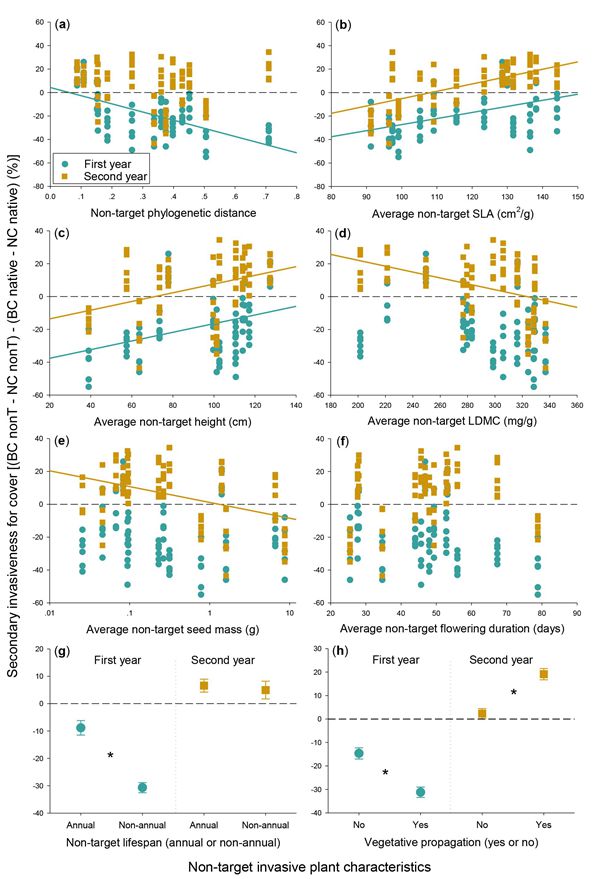Name:HHUANG Wei
Tell:
Email:huangwei0519@wbgcas.cn
Organization:Wuhan Botanical Garden
Study: Secondary Invasion Occurs, but Invasiveness Varies after Management
2023-04-11
Secondary invasion, which refers to the proliferation of non-target invaders following efforts to suppress or control dominant target invaders, is common in invasive plant management in ecosystems that harbor multiple non-native species. To date, this has become a serious obstacle to ecosystem recovery. However, little is known about the dynamics and potential mechanisms of secondary invasion.
Researchers from Wuhan Botanical Garden tested secondary invasion and evaluated the invasiveness of 14 non-target invaders after control of Ambrosia artemisiifolia by the biocontrol agent Ophraella communa in two consecutive years.
The results showed that secondary invasion occurred for all tested non-target invaders, but their abilities to invade (secondary invasiveness) differed among non-target invaders and varied with time since management. Specifically, important drivers of secondary invasiveness were phylogenetic relatedness between the target invader that was managed by biocontrol and the non-target invaders, as well as the non-target invaders’ functional traits that confered competitive advantages. However, the importance of these two drivers varied with time since management.
This study is the first to apply the theories of phylogenetic relatedness and functional traits to investigate secondary invasiveness following management of the dominant invader. The results of this study provide valuable insights to help to predict and manage secondary invasions to restore native communities more effectively.
This research was funded by the National Natural Science Foundation of China and the Natural Science Foundation of Hubei Province. The results have been published in New Phytologist entitled “Dynamics and mechanisms of secondary invasion following biological control of an invasive plant”. (First published: 14 March 2023)

Relationships between characteristics of non-target invaders and their secondary invasiveness changed over time since biological control of the invasive plant Ambrosia artemisiifolia (Image by WBG)